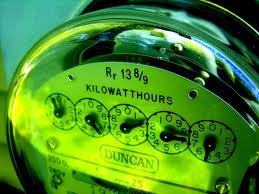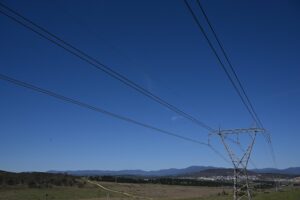Electricity network businesses could become a source of huge energy savings for households and business, according to a study commissioned by the Clean Energy Finance Corporation.
The study – Investing in Savings: Finance and Cooperative Approaches to Electricity Demand Management, conducted by the Institute for Sustainable Futures of the University of Technology Sydney – identifies how CEFC investment in a cooperative network-consumer approach to saving energy could cut billions of dollars from Australia’s electricity bills.
Demand management – which the CEFC points out is “historically underutilised in Australia,” with costly infrastructure development favoured instead – lowers and shifts demand for electricity as an alternative to creating additional supply through expanding the grid.
Chris Dunstan, the report’s lead author, says the cooperative approach would cut costs by reducing end-use energy consumption; reducing electricity demand and the need for peak electricity generation; and by deferring or avoiding network capital expenditure – the main driver of Australia’s recent electricity bill increases.
“It is estimated that savings of $900-$1900 per household could be delivered in instances where Demand Management is taken up,” said Dunstan, a Research Director at the Institute for Sustainable Futures of the University of Technology Sydney. “However, capturing these savings needs more than changing regulations. A more collaborative approach is required.”
To assist in developing this approach, the report concludes that the CEFC could support Demand Management by making finance available to invest in energy savings for network customers.
CEFC CEO Oliver Yates has welcomed the report’s finding, noting that clean energy should be about delivering economic as well as environmental benefits to Australia.
“This scoping study provides a vision for a win-win outcome for energy customers, and for network businesses and their shareholders,” Yates said. “The CEFC stands ready to invest in initiatives to help achieve this, but we recognise that policy makers and regulators also have a crucial role to play.”
Dunstan agrees that, beyond investment, implementing such an initiative would require clear government policy requesting network businesses to establish performance measures and targets, thus allowing the private sector to provide alternative solutions to the current consistent pattern of building more infrastructure to meet peak demand.
“More than $40 billion is being spent over the current five years period on electricity distribution and networks in Australia. This is the largest contributing factor to the rise in consumer electricity bills, which have increased in real terms by 70 per cent between June 2007 and December 2012. About $15 billion of this investment is earmarked to meet growth in demand. Meanwhile overall electricity consumption has been falling not growing,” Dunstan said.
Collaborative efforts by government and regulators would include supportive policy for demand management, targets for network businesses for demand reduction and lowered consumer costs. These efforts would be enabled by the Australian Energy Regulator allowing network businesses to share in the future savings of avoided network infrastructure in order to recover investment in Demand Management.
Dunstan noted that such collaborative approaches have been applied successfully in Ontario Canada, California and in Queensland. The study looks at international practice in this areas and how these systems could be adopted more extensively in Australia.
Meanwhile, Yates and the CEFC will use this week’s Clean Energy Week conference in Brisbane to highlight the opportunity for Australian business and industry to benefit from initiatives like, and on how the clean energy fund can help through investment.
“The CEFC has received a positive response from the market and is in active discussions with over 50 project proponents, involving CEFC finance of about $2 billion for $4.5 billion in projects spanning a full range of technologies and economic sectors nationwide,” Yates said.
To date, the CEFC has been involved in two wind farm financing deals –Taralga Wind Farm in NSW refinancing for Macarthur Wind Farm in Victoria – and is working with the Commonwealth Bank to provide a $100 million program of Energy Efficient Loans to manufacturers.








